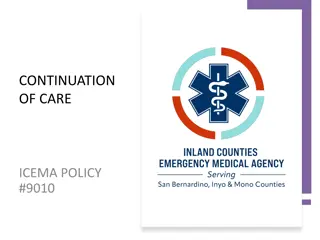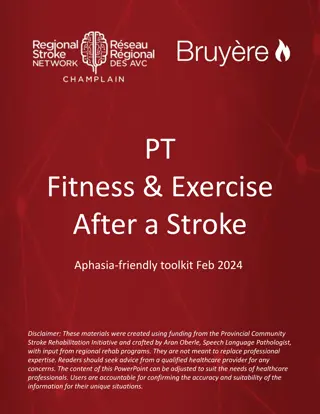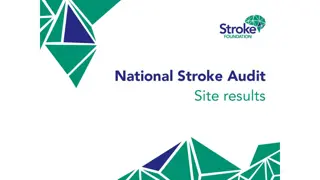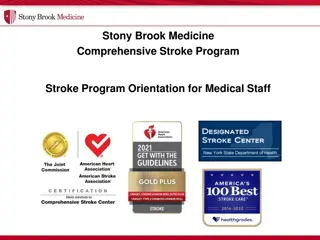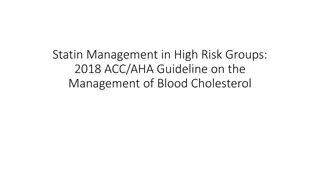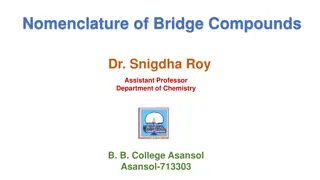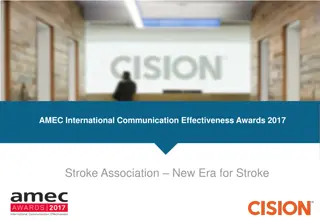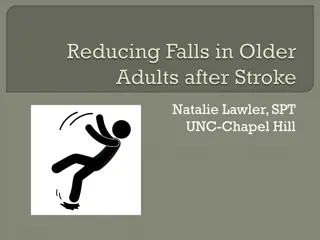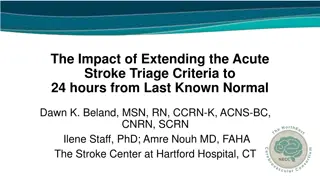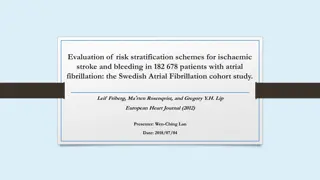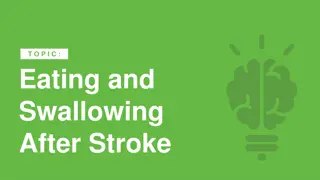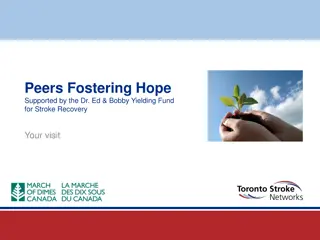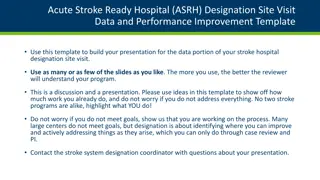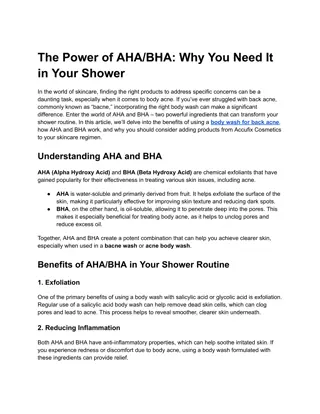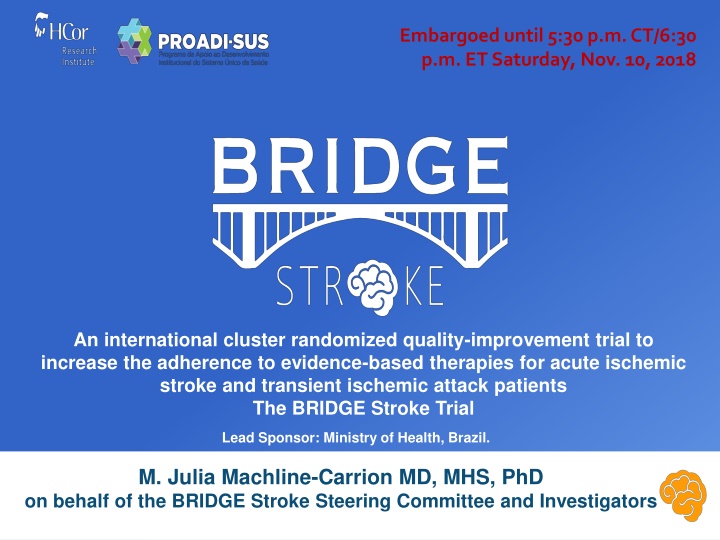
International Quality Improvement Trial for Acute Stroke Patients
Embargoed until 5:30 p.m. CT/6:30 p.m. ET on Saturday, Nov. 10, 2018, the BRIDGE Stroke Trial is a cluster randomized trial aiming to enhance adherence to evidence-based therapies for acute ischemic stroke and transient ischemic attack patients. Led by the Ministry of Health in Brazil, this trial involves multiple countries and hospitals to improve patient outcomes in stroke management.
Download Presentation

Please find below an Image/Link to download the presentation.
The content on the website is provided AS IS for your information and personal use only. It may not be sold, licensed, or shared on other websites without obtaining consent from the author. If you encounter any issues during the download, it is possible that the publisher has removed the file from their server.
You are allowed to download the files provided on this website for personal or commercial use, subject to the condition that they are used lawfully. All files are the property of their respective owners.
The content on the website is provided AS IS for your information and personal use only. It may not be sold, licensed, or shared on other websites without obtaining consent from the author.
E N D
Presentation Transcript
Embargoed until 5:30 p.m. CT/6:30 p.m. ET Saturday, Nov. 10, 2018 An international cluster randomized quality-improvement trial to increase the adherence to evidence-based therapies for acute ischemic stroke and transient ischemic attack patients The BRIDGE Stroke Trial Lead Sponsor: Ministry of Health, Brazil. M. Julia Machline-Carrion MD, MHS, PhD on behalf of the BRIDGE Stroke Steering Committee and Investigators
Trial Organization Project Office (Brazil): Eliana Vieira Santucci Lucas Petri Damiani Karina Normilio-Silva Priscila Regina Torres Bueno Isabella de Andrade Jesu no L gia Nasi Laranjeira Rafael Marques Soares Samara Pinheiro Tamiris Arbait Juliana Yamashita dos Santos Gisele Mota Ribeiro Beatriz Gonzales Pacheco Carolina CandidoTrovarelli Project Office (Argentina): Maria Marta Esnaola Marilia Garcia Virginia Tejada Steering Committee: M. Julia Machline-Carrion (PI, Co-Chair) Otavio Berwanger (Co-Chair) Maria Cecilia Bahit Germ n Malaga Oct vio Marques Pontes Neto Sheila Cristina Ouriques Martins Gabriel de Freitas Viviane Flumignan Z tola Alessandra Gorgulho Ant nio De Salles H lio Penna Guimar es Alexandre Biasi Cavalcanti Ying Xian Janet Prvu Bettger Renato Delascio Lopes Eric Peterson Project Office (Peru): Andre Carbajal Patricia Busta Carolina Torres Michael Reyes CEC: Renato Delascio Lopes Pedro Gabriel de Melo Barros H lio Penna Guimar es International Coordinating Center: HCor Research Institute (Brazil).
Background and Rationale Despite the established efficacy of several interventions for the management of patients with Acute Ischemic Stroke (AIS) and Transient Ischemic Attack (TIA), the uptake of evidence-based measures remains suboptimal especially in low- and middle-income countries. Robust quality improvement trials are scarce in these settings.
36 Clusters (Hospitals with 24/7 Emergency Department, CNS imaging and Rt-PA ) including 1,624 consecutive patients with AIS or TIA admitted within 24 hours from symptoms onset Concealed Randomization Routine Practice Multifaceted Quality Improvement Intervention (n= 19 clusters and 817 patients) (n= 17 clusters and 807 patients) ITT ITT Primary Endpoint: Composite Adherence Score to 10 In-Hospital Quality Measures Secondary Endpoints: Complete Adherence to 10 In-Hospital Quality Measures, Rt-PA in 24 hours, Antithypertensives, DTNT < 45 min, 90-days Clinical Events
Outcomes Primary Outcome Secondary Outcomes Composite Adherence Score to 10 In-Hospital Quality Measures: Early Antithrombotics. Rt-PA Within Window. DVT Prophylaxis. DTNT< 60 minutes. Dysphagia Screening. Assessment for Rehabiliation. Antithrombotics at Discharge. Anticoagulants Fibrillation or Flutter. Statins for LDL >100 or not documented. Smoking Cessation Education. Complete Adherence to 10 In-Hospital Quality Measures (All or None Model). Therapeutic Rt-PA in Patients Admitted within 24 hours. Antihypertensives for Atrial DTNT< 45 min 90-days (mortality, stroke recurrence). Clinical disability Events and
Statistical Analysis Sample size: assuming a 12% non-adjusted mean difference, a 0.05 two-tailed alpha, approximately 40 patients per cluster and a 0.20 ICC, we estimated that 36 clusters (Brazil, Argentina and Peru) were needed. All analyses followed the intention-to-treat principle. Mixed-effect linear regression model. Effects were expressed as a mean difference and as a population average odds ratio (ORPA ) and 95% CIs.
The BRIDGE Stroke Quality Improvement Intervention Poster (Reminder) Case Manager Therapeutic Plan (Algorithm) Trained nurses who ensure that all components of the intervention are being used Algorithm for care management and recommendation of evidence-based therapies Patient Wristband Patient identification system including a colored wristband and printed reminders
The BRIDGE Stroke Quality Improvement Intervention Poster (Reminder) Case Manager Therapeutic Plan (Algorithm) Audit and Feedback Educational materials containing evidence-based recommendations Educational Materials Periodic feedback reports on adherence to quality measures
Patient Baseline Characteristics Intervention (n=817) Control (n=807) Patient Baseline Characteristics Men (%) Age, mean (SD), y Diabetes (%) Hypertension (%) Dyslipidemia (%) Current Smoking (%) Family history of stroke (%) Stroke (%) CAD (%) Atrial fibrillation (%) Renal failure (%) Use of statins in the last month (%) Final Diagnosis AIS (%) TIA (%) 441 (54.0) 70.3 (13.6) 252 (30.8) 627 (76.7) 224 (27.4) 129 (15.8) 62 (7.6) 243 (29.7) 113 (13.8) 120 (14.7) 25 (3.1) 207 (25.3) 472 (58.5) 68.4 (13.4) 232/806 (28.8) 592 (73.4) 150 (18.6) 169 (20.9) 116 (14.4) 213 (26.4) 156 (19.3) 74 (9.2) 32 (4.0) 190 (23.5) 711 (87) 106 (13) 723 (89.6) 84 (10.4)
Cluster Baseline Characteristics Intervention Control Cluster Baseline Characteristics (n=19) (n=17) Neurologist Available at ED* (%) 13 (68.4) 9 (52.9) Mechanical Thrombectomy Capabilities (%) 17 (89.5) 15 (88.2) Stroke Unit (%) 10 (52.6) 7 (41.2) Stroke Protocol available at the Hospital (%) 19 (100) 17 (100) JCI** Accreditation (%) 1 (5.3) 3 (17.6) Teaching Hospital (%) 13 (68.4) 15 (88.2) Prior participation in multicenter clinical trial (%) 17 (89.5) 15 (88.2) Volume of patients seen in ED per mo, median (IQR) 1600 [425 - 3000] 1400 [800 - 4000] Baseline rate of primary outcome, median (IQR) 77.1 [67.7 - 82.5] 75.3 [66.2 - 79.8] *Emergency department, **Joint Comission International
Composite Outcomes Complete Adherence to In-Hospital Quality Measures Composite Adherence Score (%) Mean Difference = 4.20 (-3.80-12.20) ICC = 0.32 85.3 % ORPA = 2.59 (1.05 6.41) ICC = 0.25 77.8 % 100 100 90 90 80 80 70 70 60 60 49.2 % 50 50 40 40 25.2% 30 30 20 20 10 10 0 0 Intervention Control Intervention Control
Adherence to In-Hospital Quality Measures Endpoints Intervention Control Odds Ratio (95% CI) P value n/N (%) Acute therapies during first 48 hours Rt-PA within therapeutic window Door-to-needle time < 60 min 122/222 (55.0) 107/268 (39.9) 2.77 [1.14; 6.72] 0.01 84/145 (57.9) 59/121 (48.8) 2.47 [0.81; 7.52] 0.06 Early Antithrombotics 759/811 (93.6) 756/803 (94.1) 0.59 [0.22; 1.57] 0.22 DVT Prophilaxis 326/450 (72.4) 234/466 (50.2) 2.56 [0.76; 8.67] 0.07 Dysphagia Screening 577/711 (81.2) 460/723 (63.6) 2.82 [0.54; 14.65] 0.14 Discharge therapies Antithrombotics 751/811 (92.6) 759/806 (94.2) 0.59 [0.22; 1.54] 0.21 Anticoagulants for AF or Flutter Lower lipids medication in patients with LDL > 100 or not documented Smoking Cessation Education Assessed for Rehabilitation 111/146 (76.0) 77/97 (79.4) 1.02 [0.34; 3.00] 0.97 613/675 (90.8) 631/701 (90) 0.87 [0.45; 1.65] 0.61 93/129 (72.1) 82/169 (48.5) 3.22 [0.86; 12.09] 0.04 620/711 (87.2) 574/723 (79.4) 1.92 [0.47; 7.86] 0.28 0.10 0.20 0.33 0.50 0.75 1.001.33 2.00 3.00 5.00 10.00 15.00
Clinical Events Clinical events Intervention Control Odds Ratio 95%CI P value n/N (%) Events (In Hospital) Hemorrhagic Transformation 42/817 (5.1%) 20/804 (2.5%) 2.11 [1.06; 4.21] 0.02 4/817 (0.5%) 3/805 (0.4%) 1.24 [0.13; 11.53] 0.83 Non fatal cardiac arrest ... 12/817 (1.5%) 3/805 (0.4%) 5.15 [0.67; 39.66] 0.08 Major Bleeding ... 17/817 (2.1%) 11/805 (1.4%) 1.51 [0.37; 6.22] 0.52 Acute Coronary Syndrome 7/817 (0.9%) 0/807 (0%) - 0.93 Stroke Recurrence 22/817 (2.7%) 17/807 (2.1%) 1.67 [0.60; 4.66] 0.28 Total Mortality 17/817 (2.1%) 14/807 (1.7%) 1.64 [0.48; 5.58] 0.38 Cardiovascular Mortality Events (within 90 days) 2.26 [0.78; 6.49]a 11/817 (1.3%) 5/807 (0.6%) 0.13 Stroke Recurrence 1.16 [0.68; 2.01]a 103/817 (12.6%) 95/807 (11.8%) 0.58 Total Mortality 1.53 [0.54; 4.27]a 17/817 (2.1%) 14/807 (1.7%) 0.42 Cardiovascular Mortality 274/662 (41.4%) 255/670 (38.1%) 1.11 [0.70; 1.76] 0.61 mRankin < 2 0.5 0.1 0.2 0.3 1.0 2.03.0 5.0 10.0
Subgroup Analysis Primary Enpoint: Composite Adherence Score Intervention Mean standard deviation P value for interaction Subgroup Mean difference (95% CI) Control Hospital status Teaching 87.1 18.5 (n=161) 83.7 14.9 (n=97) 0.33 [-19.34; 20.00] 0.67 Non-teaching 84.9 20.4 (n=656) 77.1 18.6 (n=710) 5.06 [-3.94; 14.06] Stroke unit Absent 78.6 24.3 (n=358) 78.2 19.0 (n=452) -3.68 [-13.38; 6.02] 0.05 Present 90.6 14.0 (n=459) 77.5 17.4 (n=355) 11.04 [0.69; 21.39] Neurologist in the emergency department Absent 88.8 16.1 (n=245) 81.1 17.7 (n=388) 1.90 [-10.75; 14.56] 0.56 Present 83.9 21.4 (n=572) 75.0 18.3 (n=419) 6.76 [-3.18; 16.71] Final diagnosis Acute Ischemic Stroke 84.6 19.8 (n=711) 76.8 17.8 (n=723) 5.01 [-2.64; 12.66] 0.01 Transient Ischemic Attack 90.3 21.3 (n=106) 87.9 19.8 (n=84) -1.99 [-10.84; 6.86] Country Argentina 82.9 17.2 (n=44) 78.9 18.6 (n=82) 5.27 [-8.17; 18.71] 0.01 Brazil 88.3 16.2 (n=730) 80.3 17.3 (n=628) 3.82 [-2.31; 9.95] Peru 38.4 23.6 (n=43) 61.4 16.1 (n=97) -23.4 [-41.16; -5.64] -40 -35-30 -25 -20-15-10 -5 0 5 10 15 20 25
Conclusions A multifaceted quality improvement intervention did not result in significant increase in composite adherence score for evidence-based therapies in patients with AIS or TIA However, when using a more conservative all or none approach (complete adherence), the intervention resulted in improved adherence to evidence-based therapies. A quality improvement intervention also resulted in significant increase in the use of thrombolysis and smoking cessation education.


